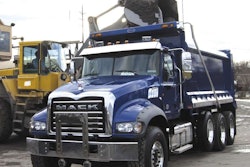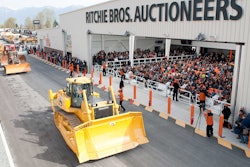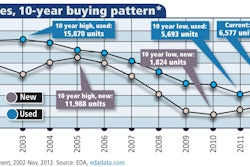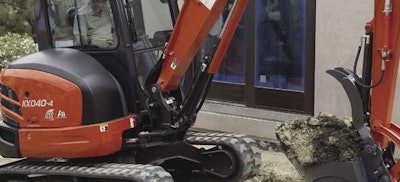
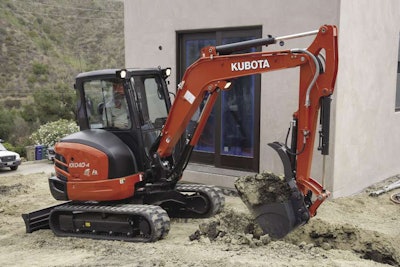
1. What are your job specifics?
Putting in an irrigation system will require a different machine than installing concrete pipe. You need to know how much dig depth, lift capacity and reach your job demands. And don’t just go for a bare minimum, advises Tom Connor with Bobcat. If you’re consistently digging to 8 feet, for example, consider a 10-foot-dig-depth machine. With 0.76 to 8 metric tons operating weight, compact excavators have dig depths ranging from 5 to 15.5 feet.
2. How much lift capacity do you require?
Look at what needs to be lifted, how much it weighs and where it will be placed. Your rental dealer should have access to machine lift charts to help make this determination. At a 10-foot radius, lift-over-end capacities of these machines range from 430 to about 10,000 pounds, and lift-over-side capacities go from 210 to 6,700 pounds.
3. How much reach do you need?
Reach may actually be more important than dig depth on your job, says John Comrie with Volvo Construction Equipment. You may need to lift only 1,000 pounds but have to go out 10 feet.
4. How high do you need to dump?
Dump height comes into play when loading dump trucks or dumping over an obstacle. Dump heights on these machines range from 6 to 23 feet.
5. What is the width of the doorways or gates you need to go through?
Most compact excavators under 4,000 pounds will have a retractable undercarriage, Comrie says. The tracks retract to go through narrow areas, and then extend again to provide a more stable working footprint.
6. Are there any weight restrictions?
If working inside a building, for example, find out if there are any floor load limitations, Connor says. Also consider ground pressure restrictions such as underground irrigation systems that would limit the weight of the machine, advises Mike Bierschbach with United Rentals.
7. Will you be using attachments?
The excavator will need auxiliary hydraulic flow to power high production attachments such as hammers or augers. A quick coupler will make attachment change outs easier, Connor says. And tell your rental dealer the type of material you’re digging so he can help you select the right bucket, says Bierschbach.
8. Does your job require steel tracks?
The majority of compact excavators use rubber tracks because of their low ground pressure, but you may want to consider a steel track machine if you’re working in demolition or rough underfoot conditions.
9. How close do you need to get to a wall or other obstacle?
Compact excavators come in zero tail, minimal tail and conventional tail swings, ranging from zero to 46 inches of tail off the side. If your job is tight against a wall, a zero-tail-swing machine is an option. But keep in mind conventional tail swing machines offer more reach, stability and lift capacity, Comrie says.
10. Will you be transporting it yourself?
If so, make sure your equipment can legally tow the machine you’re renting, especially if you’re planning to use a pickup. A great resource for determining this is ProPickup’s tow ratings charts for 1/2-ton, 3/4-ton and 1-ton pickups, available at propickupmag.com/2013-pickup-tow-ratings (or check out the current ProPickup issue that came with this magazine).





